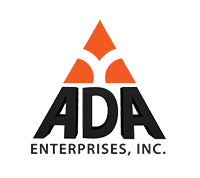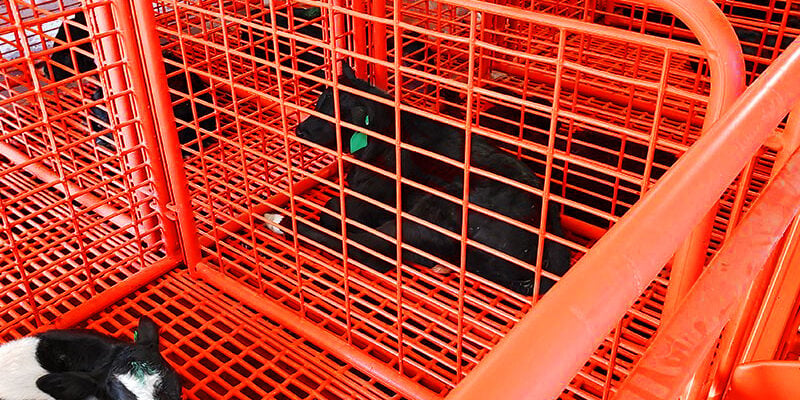At ADA Enterprises, we know that proper calf pen hygiene is essential to raising healthy calves and creating a clean, safe environment for young animals to grow and thrive. Whether you’re managing group housing, individual calf pens, or a busy calving pen, one thing is clear: hygiene isn’t just a best practice—it’s a foundation for success.
From the moment a new calf is born, it’s exposed to disease transmission risks caused by milk residue, organic material, and manure buildup. Poor hygiene doesn’t just increase the likelihood of diarrhea, scours, and salmonella—it also weakens the immune system of young calves, reduces growth rates, and drives up treatment costs. Fortunately, these risks are preventable with the right systems in place.
Let’s explore how you can improve your farm’s hygiene protocols—starting from the ground up—with ADA Enterprises’ plastisol-coated steel flooring.
Why Calf Pen Hygiene Matters
Keeping calves healthy starts with a clean environment. When pens are reused for each new calf without proper disinfection, germs, bacteria, and pathogens accumulate rapidly. Wet, contaminated floors and equipment create ideal conditions for infection and stress.
Common hygiene failures include:
- Reusing the same pen without a complete wash and disinfecting cycle
- Leaving behind milk residue or dirt on feeding equipment
- Poor drainage that allows wet bedding, straw, and debris to collect
- Inconsistent cleaning of buckets, drying racks, and water lines
All of these factors increase the risk of diseases that impact both the life and productivity of your calves.
Built for Cleanliness: ADA Flooring Makes the Difference
Your flooring plays a major role in calf health and calf rearing. ADA Enterprises offers first-rate steel flooring, fully coated with plastisol (polyvinyl, plastic)—and only plastisol. No other coating materials are ever used on ADA products. This commitment ensures every surface is durable, hygienic, and resistant to contamination.
Here’s how our flooring helps maintain a hygienic environment:
- Smooth, non-porous surface prevents organic material from sticking
- Easy to scrub, rinse, and disinfect with hot water or lukewarm water
- The mesh surface of the floor allows moisture to drain through to the area below.
- Elevated design allows airflow under the pen, helping keep the area dry
- Compatible with high-pressure cleaners, which are ideal for removing tough buildup
Unlike traditional flooring materials that can harbor bacteria and absorb moisture, ADA’s plastisol-coated steel resists corrosion, wear, and pathogen growth—even after repeated cleanings.
Best Practices for Cleaning Calf Pens
Effective hygiene involves more than just spraying water. Here’s a step-by-step guide to ensure each pen is ready for the next calf:
1. Remove All Bedding and Debris
Clear out used straw, manure, and any leftover feed or organic material. This reduces dirt and nutrient sources for bacteria.
2. Pre-Soak and Wash
Soak surfaces with warm water to loosen residues. Use a high-pressure cleaner to remove stubborn milk residue and grime from flooring, walls, and equipment.
3. Scrub and Disinfect
Apply a farm-approved disinfectant and thoroughly scrub all surfaces, including buckets, feeding equipment, and drying racks. Don’t forget corners and hard-to-reach areas.
4. Rinse Thoroughly
Use clean, lukewarm water to fully rinse all equipment and flooring. This step ensures no chemical residue is left behind that could irritate calves or reduce treatment effectiveness.
5. Dry Completely
Allow pens and equipment to dry fully before laying down fresh bedding. Dry environments help prevent the survival of germs, pathogens, and bacteria.
Hygiene Across Calf Rearing Stages
Hygiene isn’t a one-time effort—it needs to be a part of every phase of calf rearing, from birth through weaning.
- Calving Pen: Prepare with clean flooring and disinfected surfaces before each cow enters. Remove organic material immediately after calving to protect the new calf.
- Feeding Areas: Wash and dry feeding equipment, buckets, and milk lines after every use. Residual milk quickly becomes a breeding ground for pathogens.
- Water Supply: Keep troughs and nipples clean. Flush systems regularly to remove buildup and maintain a safe water supply.
- Group Housing: Disinfect between groups. Transitioning young calves to shared spaces increases risk of infection, especially if surfaces aren’t properly cleaned.
The Role of the Farm Manager
As a farm manager, your leadership drives biosecurity success. Standardize cleaning schedules, inspect equipment, and provide proper training. Work closely with a veterinarian to design hygiene protocols that fit your specific herd needs.
Every detail matters—from how often pens are cleaned to the temperature of the water used. Even small lapses can lead to big problems in calf health and performance.
A Cleaner Future with ADA Flooring
At ADA Enterprises, we’re committed to supporting farms with flooring that makes hygiene easier, faster, and more effective. Our plastisol-coated steel flooring offers unmatched resistance to contaminated materials, cleaning chemicals, and repeated high-pressure washing—ensuring a longer lifespan and better ROI for your facilities.
The new Calf Flooring and Calf Stalls feature Plastisol with built-in antimicrobial protection. Rigorously tested, this material inhibits harmful bacteria such as Escherichia coli and Salmonella enteritidis by 99.99%.
This protection helps producers maintain higher levels of cleanliness and hygiene using their standard cleaning practices. Unlike antibiotics, antimicrobials inhibit the growth of microorganisms without introducing medications. ADA Calf flooring and stalls are antimicrobial-protected and antibiotic-free, giving you a cleaner, safer environment for your calves.
From reducing stress in calves to limiting the spread of diarrhea and salmonella, maintaining hygiene isn’t just about what’s on the surface—it’s about what’s underneath.
Create a cleaner future for your calves. Choose ADA Enterprises for flooring designed to meet the highest standards in calf housing hygiene.






